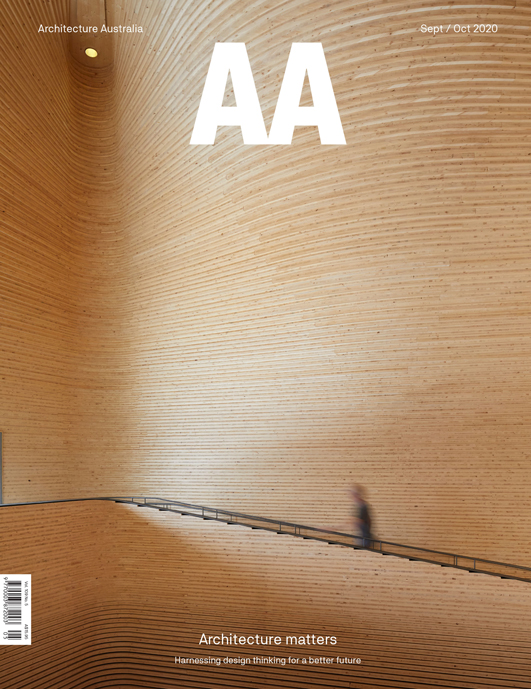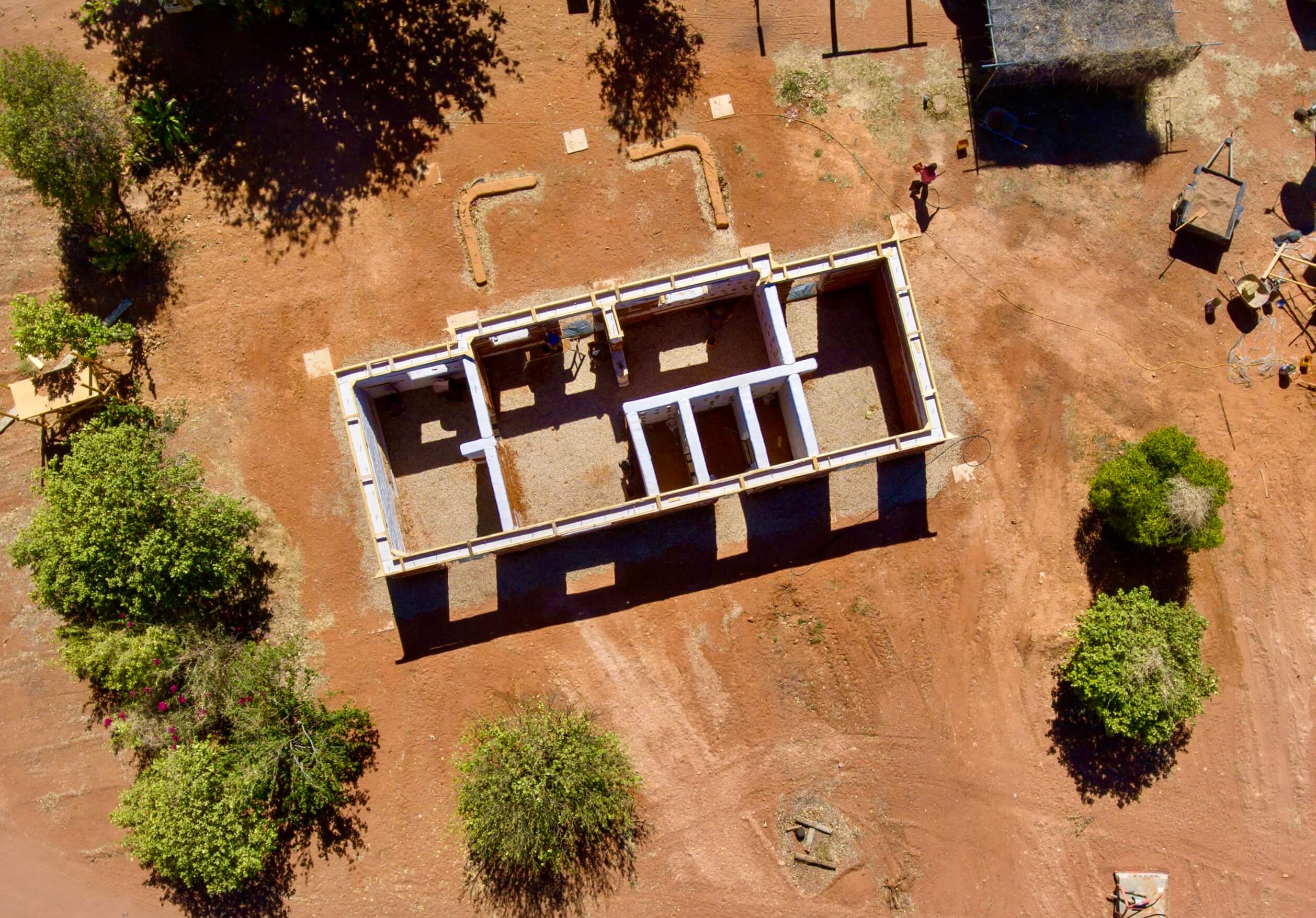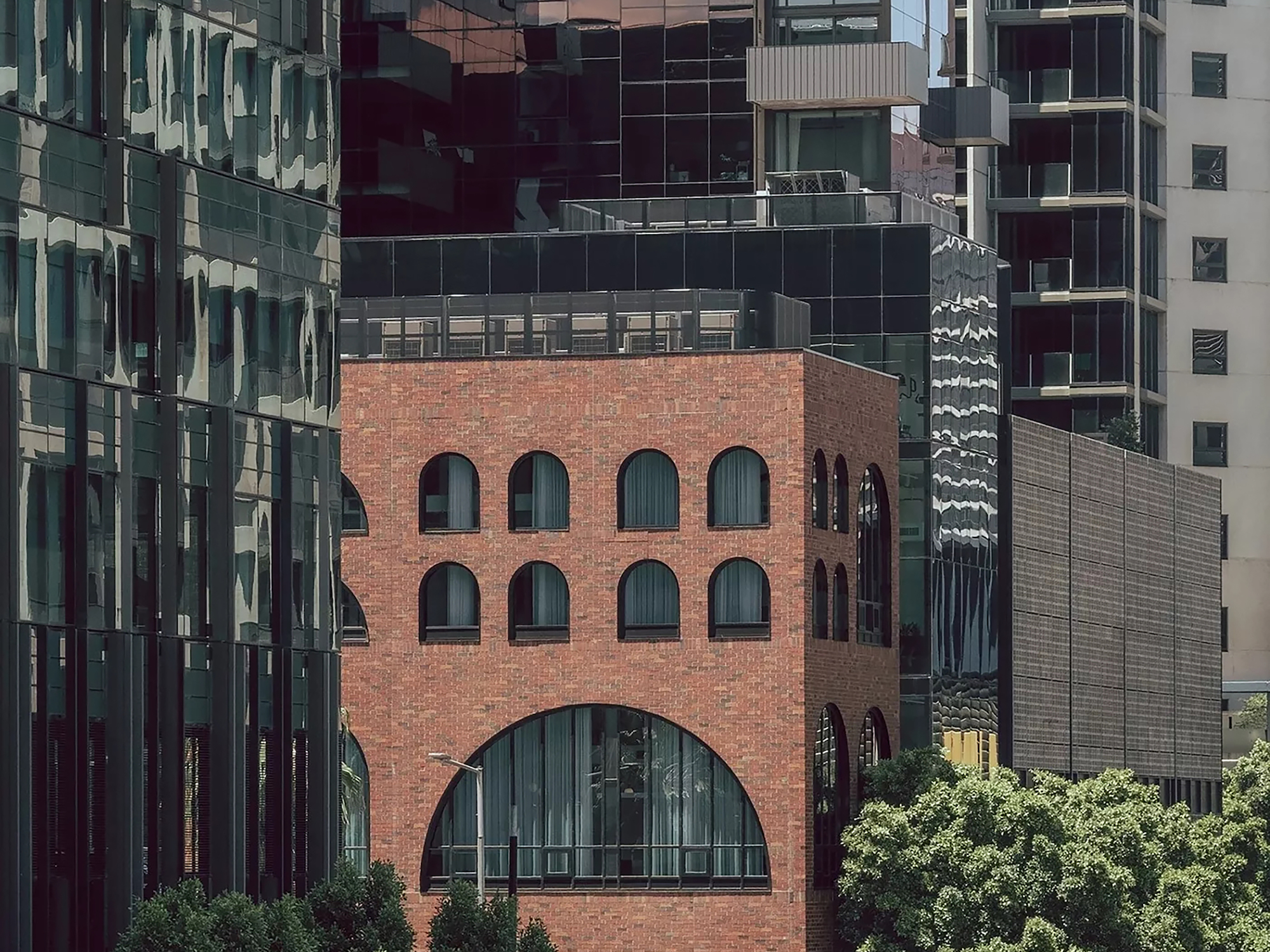All change: Sporting facility upgrades
Words by Timothy Moore and Amelia Borg
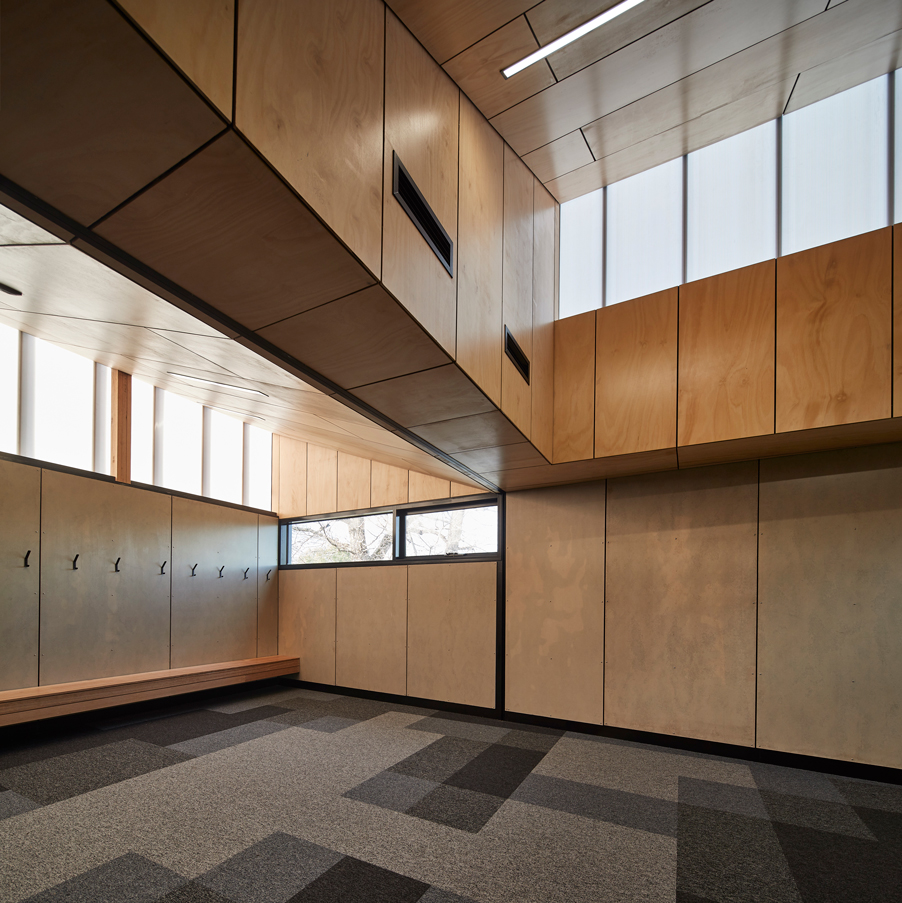
Community football and cricket facilities are no longer occupied primarily by men. Buildings are slowly being upgraded to cate for gender diversity as well as differing cultural and social needs. Alongside the changing rooms, architects need to consider elements including lighting, privacy and siting.
The rise of female participation in organized Aussie Rules football and cricket in the past decade at community and professional levels has seen an increase in demand for changing rooms at sports facilities that were previously the domain of men.1 This has led to many adverse situations due to inadequate and overcrowded facilities: women have been getting changed on the sidelines, in tents, cars, canteens and loos and even behind bushes. (And so have some men, too.) To meet the gap between the supply and demand of changing facilities – a gap that is exacerbated by the fact that many facilities are designed for the needs of males – local, state and federal tiers of government have been rolling out facility upgrades that emphasize female participation2 so that, as Prime Minister Scott Morrison put it, “girls didn’t have to change out the back of the shed.”3
Australian states and territories, along with individual sporting codes, have produced guidelines for upgrades to change facilities and clubs in order to make them “female-friendly.” Their strategies recognize that gender equity can only be achieved with intervention where the aim is to identify, evaluate and refit the spaces of gender inequality in sporting environments. Victoria’s Female Friendly Sport Infrastructure Guidelines highlights that one of several important requirements for these spaces is the provision of unisex changing rooms. In upgrades, this can see the replacement of existing open showers and urinals with lockable shower and toilet cubicles to keep spaces neutral for clubs’ many different users. “Female-friendly” is the armature used for the delivery of unisex changing rooms, but it also shepherds in the provision of generous shower cubicles with benches for people who have cultural and social needs for privacy when getting changed, including gender-diverse teams. Unisex changing rooms can also remove barriers to the participation of transgender and gender-nonconforming sportspeople.4
The Hanmer Reserve Pavilion Extension, a 2017 upgrade to Seddon Cricket Club in Melbourne’s western suburbs by Searle x Waldron Architecture, demonstrates how the guidelines take form in a building. Wanting to increase female participation in its Auskick program during winters, the club commissioned Searle x Waldron, with the backing of government funding, for a new pavilion housing female facilities. The industrial-looking new pavilion incorporates two unisex changing rooms separated by large pivot doors (a complement to two existing changing rooms in an adjacent brick building) along with storage. Angled skylights that dramatically open up the space, a signature of Searle x Waldron seen in their Art Gallery of Ballarat Annexe and University of Melbourne End-of-Trip Facilities projects, lets in diffuse light but also addresses the concern from the client stakeholder group around deliberate observation from outside if windows were lower. (One rejected option proposed by the architect included larger, lower windows where views were restricted by exploiting the existing site topography and using operable blinds in order that spaces could be more flexible in their use.)
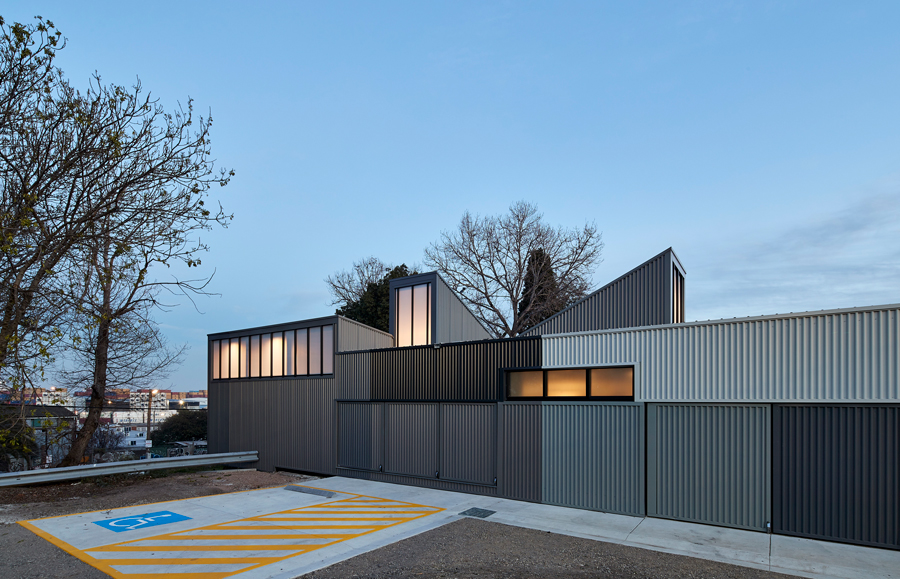
The upgrade at the Seddon Cricket Club also follows the Victorian Female Friendly Sport Infrastructure Guidelines with respect to umpire amenities, yet these unisex changing rooms have been less successful in satisfying its user groups. The room features two shower cubicles and a partition allowing it to be divided for mixed-gender use, but it is now primarily used by men. A sign on the unisex ambulant toilet and shower facility has been signposted, at times, as the female umpire changing room. This suggests the importance of involving more stakeholders, such as umpires, more closely in the briefing process.
Realizing gender equity in architecture extends beyond the interior to the siting of the building. The Hanmer Pavilion is sited adjacent to the existing building with parking nearby. The cricket field itself is across a quiet road. This is important in the creation of gender-equitable facilities that ensure players feel safe as they leave after a game or training and provide equitable access to the field and clubrooms. Safety extends beyond the changing rooms and also includes sufficient lighting between the changing room and the carpark.
At Seddon, floodlights were installed to an existing telegraph pole to make brightly lit outdoor space as a response to safety concerns. However, this common strategy for creating safe places sits in contrast to recent research by Monash University XYX Lab, Arup and Plan International, which indicated that high illuminance does not correlate with where young women feel safe. The research showed that women and gender-diverse people felt safer when lighting is layered, consistent and warm, because contrast between bright and dark spaces make it harder for the eyes to adjust. This contradiction demonstrates why linking government guidelines to perceptions of safety by users, rather than just the client, is important.
The many recent sporting facility upgrades across Australia are integral to retaining and growing female participation in Aussie Rules and cricket through the provision of more changing rooms that are unisex and have additional privacy and safer surrounds, benefitting everyone. However, more research is needed to understand the relationship between the environmental attributes of sporting facilities, such as quality design, and gendered participation in sport, to extend these observations.5 And beyond the spatial brief, there are still leaps to take in gender equity in sport, such as fair access of women’s teams to all amenities and sporting facilities, from the gym to the field, which are often still prioritized to men at optimal times.
Kate Jenkins, the sex discrimination commissioner at the Australian Human Rights Commission, identified further barriers to participation in sport in her Women in Sport Summit 2019 speech. These extend beyond the sports facilities to equal pay and sponsor support, representation in governance and respect for women more broadly.6 The upgrade of facilities is just one component in creating a more just sporting field for everyone.
Notes
- Amanda Mooney, Chris Hickey, Debbie Ollis and Lyn Harrison, “Howzat! Navigating Gender Disruptions in Australian Young Women’s Cricket,” Journal of Australian Studies vol 43 issue 1, January 2019, 71–86.
- Social scientist and writer Adele Pavlidis highlighted that, in 2017, state governments committed significant financial support to improve sports facilities for women and girls: $15 million in Queensland, $14 million in Victoria and $10 million in South Australia. Adele Pavlidis, “Making ‘space’ for women and girls in sport: an agenda for Australian geography,” Geographical Research vol 56 issue 4, September 2018, 343–352.
- Rob Harris, “Girls change rooms line doesn’t stack up in ‘sports rorts’ scandal: Labor,” Sydney Morning Herald, 30 January 2020, smh.com.au/politics/federal/girls-change-rooms-line-doesn-t-stack-up-in-sports-rorts-labor-20200130-p53wb4.html (accessed 22 May 2020).
- Ann Travers, “Transgender issues in sport and leisure,” Louise Mansfield, Jayne Caudwell, Belinda Wheaton and Beccy Watson (eds.), The Palgrave Handbook of Feminism and Sport, Leisure and Physical Education, (London: Palgrave Macmillan, 2018), 649–665.
- Clare Hanlon, Claire Jenkin and Melinda Craike, “Associations between environmental attributes of facilities and female participation in sport: a systematic review,” Managing Sport and Leisure vol 24 issue 5, July 2019, 294–306.
- Megan Maurice, “The challenges now facing women’s sport in bid to build on recent momentum,” The Guardian, 9 August 2019, theguardian.com/sport/2019/aug/10/the-challenges-now-facing-womens-sport-in-bid-to-build-on-recent-momentum (accessed 22 May 2020).
Timothy Moore is a director of Sibling Architecture and part of the research team at Monash University’s XYX Lab.
Amelia Borg is a director of Sibling Architecture and was awarded the inaugural Steve Ashton Scholarship in 2017.
